MEDELLíN, COLOMBIA - The Metro cable car lifts off from Santo Domingo station and the cows and horses grazing in the makeshift pasture beneath the gondola scatter in all directions. As we slowly glide along the steel cable, a sudden gust of wind swirls up from the Aburrá Valley below and causes the tiny pod to sway ever so gently. Soon, all of sprawling Medellín and the glorious Andes mountains surrounding it come into full view.
“I love it up here,” says Juliana Correa, my pod partner and an employee of Metro de Medellín, the city’s award-winning transit system that has helped transform this once crime-ridden metropolis into a model community that is the inspiration for the developing world.
“It’s so quiet and peaceful and from up here I see how my city has changed for the better — how we, the people of Medellín have changed forever,” says the proud Juliana.
Hope springs eternal these days in the “City of the Eternal Spring” and it’s mainly because of the transit initiative started by civic leaders 20 years ago that has helped close the massive gap between rich and poor here.
While some look upon the cable car as a mass transit solution, it’s really a lifeline for the poorest of this city’s five million residents — displaced people who were once cut off from jobs, health care and proper education and left to rot in barrios (slum neighbourhoods) ruled by notorious drug lords and their ruthless thugs.
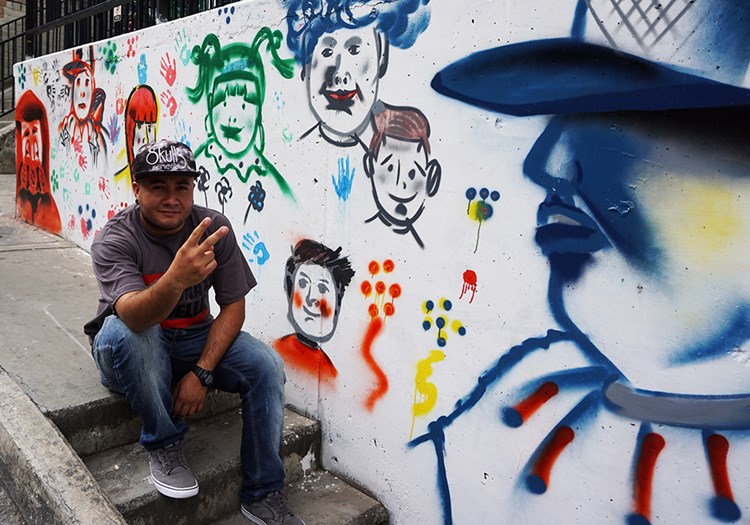
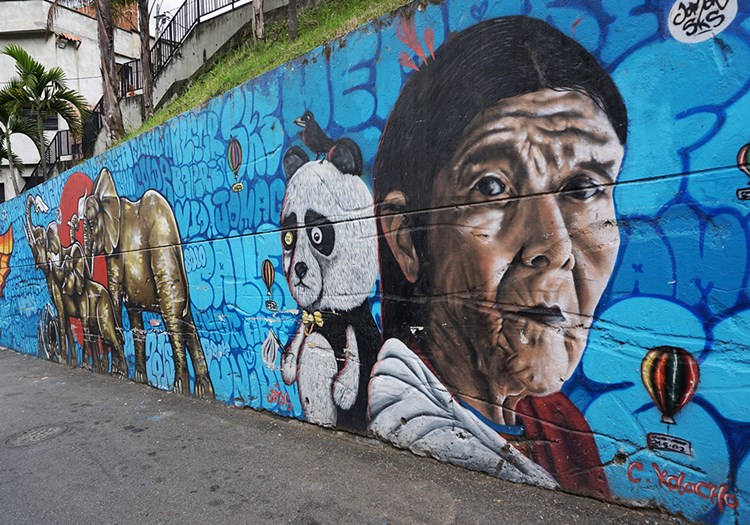
Left: Former gang members like Juda helping kids with art and hip-hop. Right: Wall art can be found everywhere.
Along with the cable cars, Medellín — pronounced Mede-jean — has installed a gleaming new subway system that interacts with the cable cars, and escalators that connect the poorest neighbourhoods to the city centre. At the same time, the local government built hospitals, libraries and community centres in the barrios — also known here as comuna — so young people could learn skills instead of hanging out on street corners with gangs.
“This is all part of the transformation of Medellín,” says Juliana as we fly over La Avanzada, once one of the toughest barrios in the city. “Now it is very safe to walk there.”
Since the introduction of the cable cars in 2014 — the first in the world to be used for mass transportation, by the way — crime in Medellín has been reduced by “66 per cent and the quality of life in the comunas has been improved immensely,” reports Juliana.
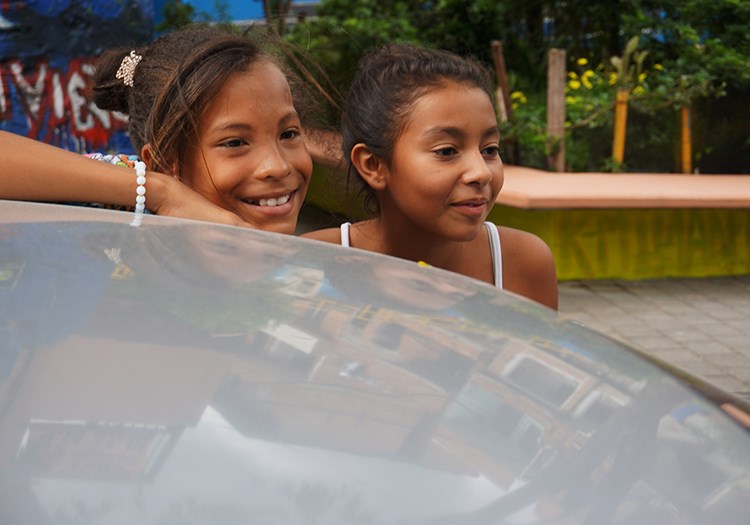
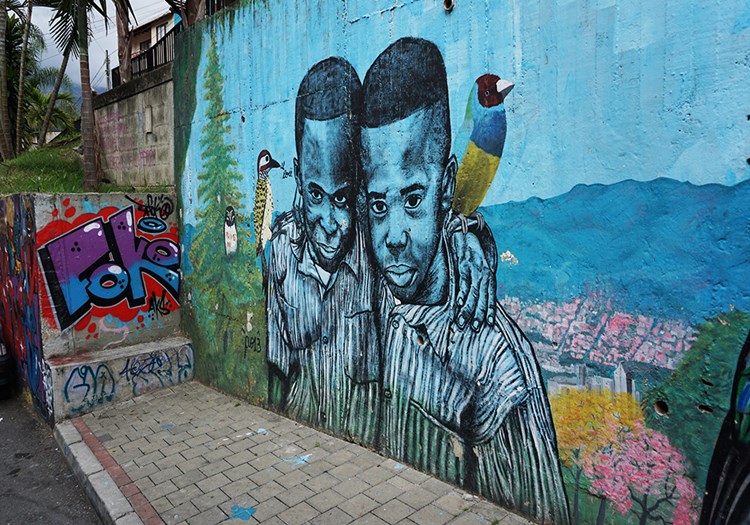
Left: Kids of the slums see a brighter future. Right: The wall art tells a story and it's not always pleasing to hear.
Each day, over 850,000 people use Medellín’s public transportation system (30,000 on the cable cars alone). “It used to take four buses and a lot of time to get from the barrios highest in the mountains to the city centre and that discouraged people from travelling. But it takes just 20 minutes by cable car now,” says Juliana, who adds that “there are even banks in the barrios and police stations — things that you never saw there before.”
The cable cars have also become an inexpensive way — rides cost about 80 cents — for tourists to get grand panoramic views of Medellín, one of the most beautiful cities in all of Latin America. In the sweltering summer months, many locals ride the cable cars to the top because, as Juliana points out, “the temperature in the mountains can be two or three degrees cooler than in the city.”
As we pass over other colourful barrios — “companies donate paint so residents can make their homes look nice” — music comes drifting up to the cable car from the neighbourhood and I see some creative graffiti painted on rooftops.
“If you think this is nice, then you must visit Comuna 13 where people are being taught to paint graffiti and learn hip-hop — these are the things making Medellín better,” says Juliana as the cable car comes to its final stop at Arví Park, a lush eco preserve that serves as the lungs for this remarkable city.
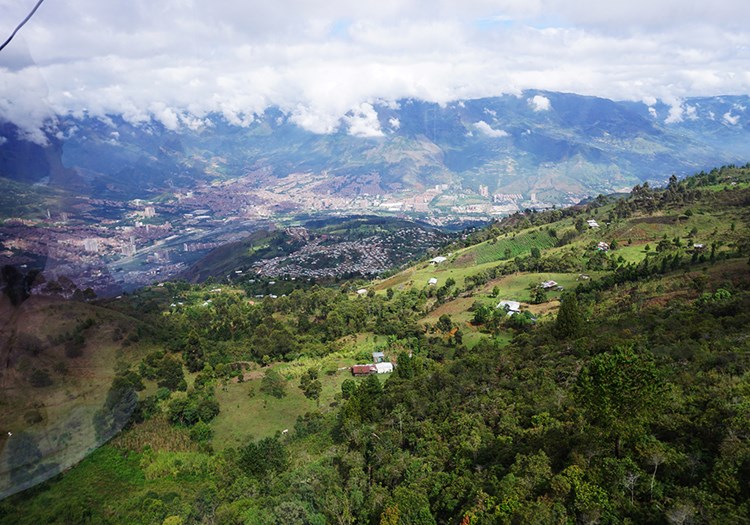
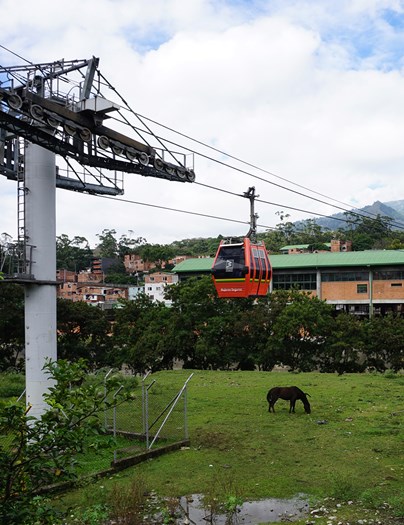
Left: New cable car and subway help lifting the people of Medellin out of poverty. Right: The view of Medellin from the cable car is spectacular.
Markus Jobi, a German expat who moved to Medellín — “for the love of a woman” — and has since started a travel company — Palenque Tours — agrees to show me around Comuna 13, a place so dangerous that even the police would not venture a few years ago. “I know Comuna 13 well — I lived very close to that area when I first arrived in Medellín,” says Jobi, who pulls his car up in front of a row of low-rise apartments on the edge of Comuna 13 and tells me to wait. A few minutes later, Jobi returns with a young man who looks like he just stepped off a hip-hop album cover.
“Meet Juda, he’s one of the co-founders of Casa Kolacho, a local initiative that helps educate kids in the ghettos,” says Jobi. “Casa Kolacho is self funded and Juda and other members of his hip-hop band help finance the project by leading graffiti tours through Comuna 13.”
With Jobi acting as the interpreter, Juda, a former gang member himself, tells me “life is getting better for the people living in Communa 13 and its because kids are using their talents to paint graffiti and perform hip-hop instead of joining gangs.
“I turned away from crime when one of my friends was gunned down and now I use my energy and his memory to help others out of poverty,” says Juda, who gives me a short tour of his sound studio, which also sells souvenirs.
Juda hops in the car and a few minutes later we arrive at a spot in Comuna 13 that looks more like an outdoor art gallery. Street art abounds and each brilliantly crafted wall painting tells a story.
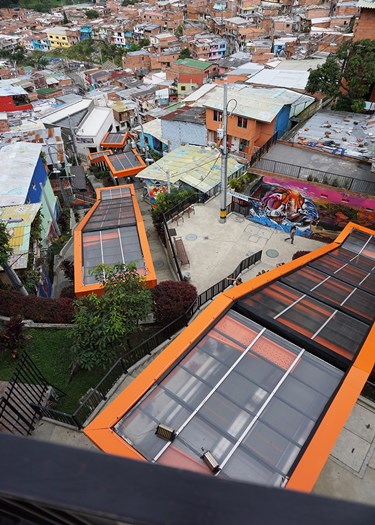
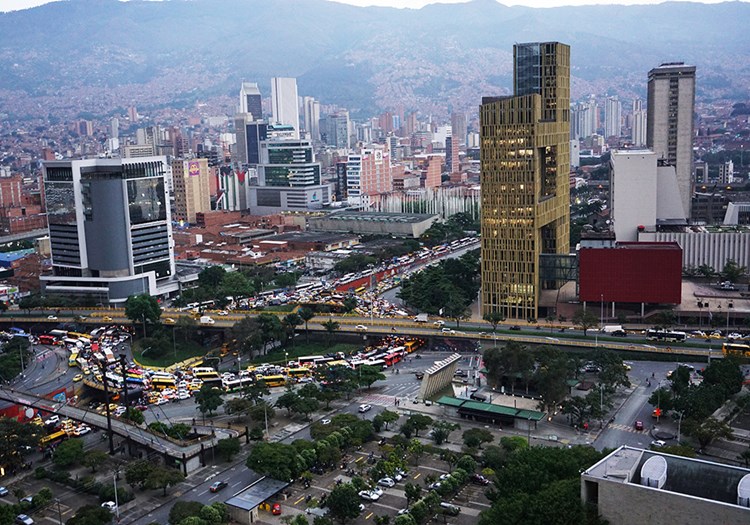
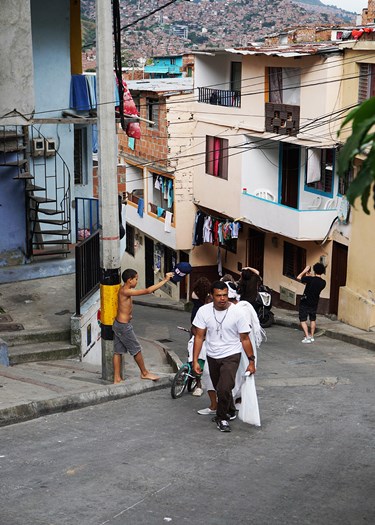
Left: Escaltors connect the poor with good paying jobs. Middle: New transportation system will help ease traffic problems. Right: Overcrowded slums see a better future.
“Many people were killed by paramilitary units on this street (it has no name) and the graffiti here tells the story of the people who died — some were old, others were very young. The graffiti artists who did these were graduates of Casa Kolacho.
“We are tired of suffering. We are tired of living what we’ve lived. We believe now it’s possible to have a better world and we are capable of doing it,” says the inspiring young man.
As I walk up the steep street with no name, youngsters rush up to me and say “hello”; one boy offers to share his soccer ball; old ladies flash toothless grins and Juda is treated like a rock star. And to think, in 2011, 162 people were murdered while walking on this same street.
“Things started to turn around here when the city constructed that,” says Juda, pointing to a series of escalators that rise 10 storeys to the top of Comuna 13.
I follow Juda onto the escalators with the orange canopies and pass many unescorted foreign tourists who are busy taking pictures of the imaginative wall art — most of which are museum worthy.
When we get to the very top — “this is where the poorest people live,” Juda says — I’m rewarded with another spectacular panoramic view of Medellín.
“Medellín is a laboratory where we experiment on a daily basis,” says the young man. “Issues remain — the drug gangs still exist but they have agreed to a ceasefire now because even they are tired of fighting.
“I like coming here because from here I see a better Medellín.”
Thanks to people like Juda and the initiatives taken here, Medellín is only going to get better.
Information
The Metrocable car operates daily from 4:30 a.m. to 11 p.m. Rides cost 80 cents and tickets can be transferred to the Metro subway system. There are five cable car lines currently operating in the city and more are being planned. The escalator is free. / Copa Airlines offers daily flights to Medellín from Toronto via Panama City.